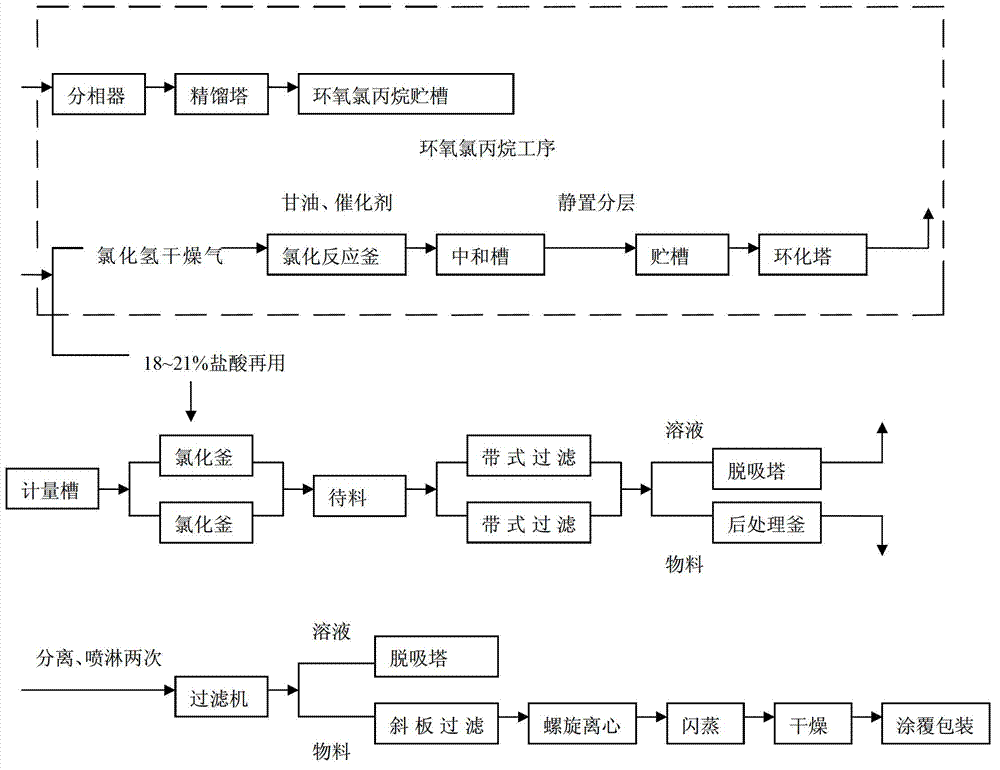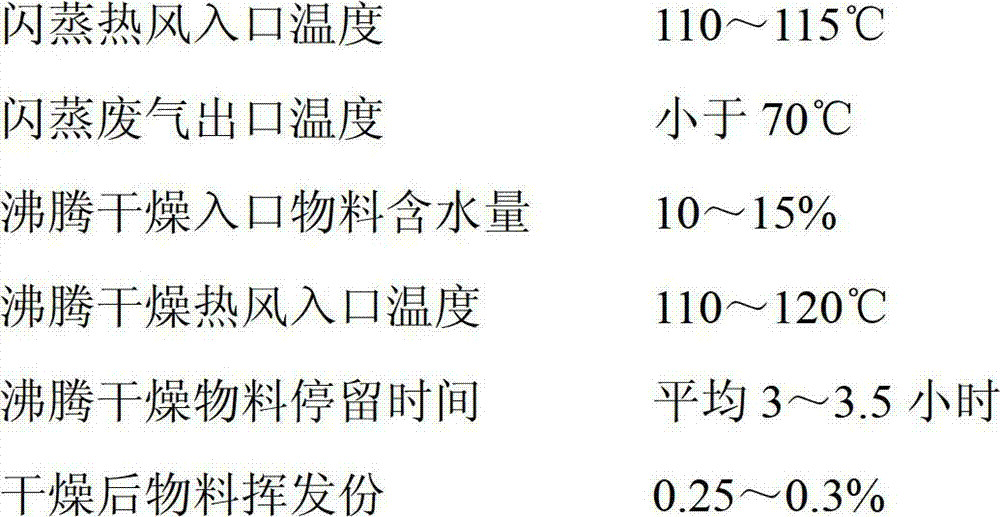Method for coproducing acid-phase-process synthesized chlorinated polyethylene and glycerol-process synthesized epoxy chloropropane
A technology of chlorinated polyethylene and epichlorohydrin, which is applied in the chemical industry, can solve the problems of serious soil salinization, waste of resources, increased production costs and long-distance transportation hazards
- Summary
- Abstract
- Description
- Claims
- Application Information
AI Technical Summary
Problems solved by technology
Method used
Image
Examples
Embodiment 1
[0089] Such as figure 1 Shown, the method for synthesizing epichlorohydrin by acid phase synthesis of chlorinated polyethylene co-production glycerol method of the present invention comprises acid phase synthesis of chlorinated polyethylene technology and glycerol synthesis of epichlorohydrin technology, its characteristics Yes: The acidic mother liquor produced in the centrifugal dehydration step in the process of synthesizing chlorinated polyethylene by the acid phase method is often decompressed to extract hydrogen chloride gas, and the extracted hydrogen chloride gas enters the chlorination reaction step in the process of synthesizing epichlorohydrin by the glycerol method, and the acidic mother liquor After extracting the hydrogen chloride gas, the remaining azeotropic mixture containing hydrochloric acid is used as the acid phase to return to the chlorination reaction step in the process of synthesizing chlorinated polyethylene by the acid phase method.
[0090] The proc...
PUM
 Login to View More
Login to View More Abstract
Description
Claims
Application Information
 Login to View More
Login to View More - R&D Engineer
- R&D Manager
- IP Professional
- Industry Leading Data Capabilities
- Powerful AI technology
- Patent DNA Extraction
Browse by: Latest US Patents, China's latest patents, Technical Efficacy Thesaurus, Application Domain, Technology Topic, Popular Technical Reports.
© 2024 PatSnap. All rights reserved.Legal|Privacy policy|Modern Slavery Act Transparency Statement|Sitemap|About US| Contact US: help@patsnap.com










